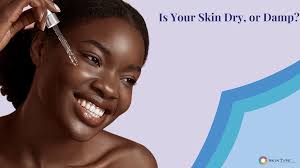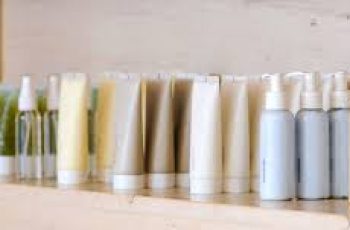Damp or Dry Skin?
Putting serums on dry or damp skin will dramatically influence how much is absorbed and how fast it is absorbed. You can alter how well your skin care routine works by the type of water you wash with, the temperature of water you use, and how damp your skin is when you apply skin care products.
Wet skin allows hydrophilic ingredients like Vitamin C pass faster through the skin.
Warm wet skin lets even more serum pass through.
Oils, on the other hand, absorb slower on wet or damp skin because they are lipophilic.
Should I Put Vitamin C on Damp or Dry Skin?
Vitamin C is a hydrophilic ingredient. It should be placed on skin after it is cleansed with warm water and ideally a low pH cleanser. (Cleanser choice depends upon your Baumann Skin Type.)
Pat skin dry so that it is still damp and apply the Vitamin C serum before the skin dries. Cover with a moisturizer.
Learn more here about why applying Vitamin C to damp skin is better.
ascorbic acid, vitamin c
What is Damp Skin?
The word “damp” originates from the Middle Low German word “damp”, which means “vapor” or “steam.” The term began to be used in the English language around the mid-14th century. Initially, it referred to noxious vapors—often those found in mines—and later evolved to represent the broader concept of moisture or humidity. Today, “damp” is commonly used to describe something that is slightly wet, such as skin after a shower or grass after a light rain.
Damp skin is a term used to describe skin that is slightly wet or moist, often right after bathing or washing. Imagine the state of your skin after you’ve stepped out of the shower and lightly towel-dried; it’s not dripping wet, but there’s still some residual moisture. This is damp skin.
Why applying Products on Damp Skin is Good?
There are two main reasons:
Increased penetration of ingredients
Easier spreadability of creams and serums
Increased penetration of ingredients
The residual moisture on skin can be beneficial for skin care product application as products can absorb more effectively on damp skin.
Better spreadability
When skin is damp, the presence of a thin layer of water can significantly enhance the spreadability of creams. To understand this, it’s helpful to think about how water behaves. It has a certain fluidity that allows it to spread across surfaces with ease, including the skin. When you apply a cream onto damp skin, the cream mixes slightly with this water layer. This mixture, being more fluid than the cream alone, spreads more easily across the skin’s surface.
The water essentially acts as a temporary carrier for the cream, helping it disperse evenly. As the water begins to evaporate, it leaves the cream behind on the skin. This improved spreadability not only ensures a more even application of the product but can also make the application process feel more pleasant, contributing to the overall skincare experience.
niacinamide
Should I Put Niacinamide on Damp or Dry Skin?
Niacinamide is hydrophilic and should be placed on damp skin. Niacinamide is a PAR-2 blocker used to lighten skin, decrease inflammation and increase cellular energy stores.
retinol
Should I Put Retinol on Damp or Dry Skin?
If the skin is warm or damp, more retinol is absorbed. if you are having retinol side effects, then dry skin more thoroughly after cleansing before you continue with your skin care routine steps. To learn more about when to apply retinol in your skin care routine, read this blog.
salicylic acid
Should I Put BHA (Salicylic Acid) on Damp or Dry Skin?
I prefer giving my patients a salicylic acid cleanser rather than a BHA cream if they are a Baumann Skin Type that needs BHA. If you are using a BHA toner, cream or serum, I recommend applying t to dry skin to prevent skin irritation. Make sure you are using the best skin care routine for your Baumann Skin Type.
benzoyl peroxide
Should I Put Benzoyl Peroxide on Damp or Dry Skin?
Always let skin dry before applying benzoyl peroxide. It can be very irritating and putting it on wet skin increases absorption. Keep in mind that if you use a skin care product with hyaluronic acid in it after applying the BP product, it will increase benzoyl peroxide absorption and increase the chances of side effects.
Should I Put Skin Medications or Skin Treatments on Damp or Dry Skin?
All medications except retinoids and benzoyl peroxide should be placed on clean skin that is still damp and warm from washing. This will help absorption.
DQH Knowledge drop: In your 20s, your skin cell turnover decreases. (Cell turnover is a key component in keeping your skin youthful.) You know what else slows down? Your collagen production. Starting in your 20s, collagen decreases by about 1 percent per year. Should you want to prevent fine lines and wrinkles, start by eliminating behaviors that contribute to premature aging. “If it’s bad for you, it’s bad for your skin,” says dermatologist Michel Somenek.
“Cigarette smoking reduces blood flow to the skin and causes premature wrinkling and a dull skin texture. Making the repeated pursed motion to inhale can also cause smoker’s lines. Alcohol and recreational drugs are toxins for the skin that damage its cellular structure and DNA,” Somenek tells us. “The faster you eliminate vices while you are young, the better chance your skin and body have to recuperate.” Also, adopting an anti-aging routine in your 20s is key. After all, the best offense is a good defense. We spoke to Somenek and experts Joshua Ross and Audrey Kunin to find out more.
Keep reading for the best anti-aging products for your 20s, according to skincare professionals.
Sunscreen
“We all know that the sun is the number one cause of skin aging and starting the prevention in your 20s is very important,” Ross says. “The majority of your sun damage won’t start to appear until you’re in your 30s, so don’t wait until you see it surface or you’ll be behind the curve. Stay ahead of it with a good-quality zinc-based sunscreen worn daily.”
Farmacy Green Defense Daily Mineral Sunscreen
An invisible sunscreen with SPF 30, plus botanical extracts meant to protect skin with tons of antioxidants. Bonus: It’s clean and fine to use under makeup.
Bareminerals Complexion Rescue™ Tinted Moisturizer Broad Spectrum SPF 30
Although we recommend you use your SPF and moisturizer separately, we also understand moments when you don’t have time or energy for that extra step. For those times, this bareMinerals moisturizer is a great thing to have on hand.
Vitamin C Serum
“A great introduction to anti-aging is to start with a vitamin C serum in your morning skincare routine,” Ross says. “It’s a powerful antioxidant that will neutralize free radicals and brighten the skin.” He adds that it’s a great way to counteract the effects of the sun’s harmful rays, which, as previously mentioned, are among the biggest causes of premature aging.
Drunk Elephant C-Firma™ Vitamin C Day Serum
The Drunk Elephant C-Firma is a lightweight serum that promises to give skin a glow by combining the brightening powers of vitamin C with ferulic acid, l-ascorbic acid, and vitamin E. The included sodium hyaluronate is meant to replace hydration loss, so you shouldn’t have to deal with any irritation.
Sunday Riley C.E.O. Rapid Flash Brightening Serum
This potent serum is jam-packed with vitamin C (15 percent, to be exact), which means it’s a potential superstar at both brightening skin and dousing it in antioxidants.
Peptides
Using peptides on your skin has many benefits, says Somenek. “The skin barrier is what defends the body against pollution, UV rays, bacteria, and toxins. It can be damaged by several everyday factors. Using topical peptides aids in building a stronger barrier,” he says. “Peptides comprise elastic fibers, which are a type of protein. These fibers help to make skin appear taut and firm. Peptides can also help repair damaged skin, relieve inflammation, and even out skin tone. Some peptides can kill acne-causing bacteria that is common in 20-somethings.”
Kunin agrees, saying, “Peptides are an excellent entry point for supporting collagen.” She recommends looking for face and eye treatments that contain these collagen-boosting powerhouses.
Charlotte Tilbury Magic Eye Rescue Cream
This Charlotte Tilbury super-emollient eye cream has a base of coconut oil and shea butter (read: it’s incredibly hydrating). Botanicals plus peptides are meant to help reduce dark circles and boost collagen, respectively.
This creamy moisturizer serves up potent collagen-boosting peptides and pycnogenol, and antioxidant-rich vitamin C. “Instead of sitting on top of the skin, peptides penetrate the outer layer so they go deep. The ‘signals’ they send tell the cells to produce elastin and collagen, which are needed for youthful-looking skin,” explains Somenek.
At-Home Peel Pads
Remember that skin cell turnover fiasco we talked about earlier? One way to help support it is by exfoliating. “Exfoliation is important to help keep skin fresh and luminous,” Kunin says. She recommends using at-home peel pads as an easy and effective way to exfoliate.
“The goal in your 20s is to fight the slowing pace of cell turnover. It is wise to use products that gently exfoliate, yet still remove oil and other impurities. Products that have Alpha Hydroxy Acids (AHA) or Beta Hydroxy Acids (BHA) are a good choice.”
According to Somenek, you should only exfoliate two to three times a week. “People of all ages are guilty of over-exfoliating and that can be too much of a good thing,” he says.
Dermadoctor Kakadu C Intensive Vitamin C Peel Pad
A few swipes of this Derma Doctor powerful peel pad promise to leave your skin glowing and smooth, thanks to the seven (yes, seven) types of chemical exfoliants, including AHA and BHA. It also contains vitamin C via Kakadu plum extract for added brightening and antioxidant protection.
KEY INGREDIENTS Kakadu plum extract is sourced from the Kakadu plum, a fruit grown in northern Australia. It contains vitamin C, which restores the skin’s natural barrier, increases collagen production, and soothes irritation.
Dr. Dennis Gross Skincare Alpha Beta® Universal Daily Peel Pads
These are the gold standard of peel pads, with a cult following and over 900 five-star reviews on Sephora. They’re easy to use and contain a blend of anti-aging exfoliating acids.
Emollient Night Cream
“In your 20s, you need to start upping the hydration in your skincare routine. You may have been cautious of over-moisturizing because of acne in your teens, but as you enter your 20s, your skin transitions and becomes drier,” Ross says. “I recommend an emollient night cream added into your evening skincare regimen.”
“Twenty-somethings need to make sure that they are not using creams that will clog their pores and cause excess oil production,” says Somenek. Opt for non-comedogenic products.
Cerave Skin Renewing Night Cream
One great choice is the CeraVe Skin Renewing Night Cream, which is a non-comedogenic night cream that leaves skin soft and glowy. It combines the moisturizing powers of ceramides and hyaluronic acid.
RoC Retinol Correxion Max Hydration Creme
“The best night cream ingredients contain retinol, benzoyl peroxide, and/or salicylic acid or hyaluronic acid. The goal is to moisturize, yet remove excess oil,” says Somenek. This Roc Retinol Correxion cream fits the bill as it contains both hyaluronic acid and retinol so it promises to moisturize while also being non-comedogenic.



